

Web 3.0 has begun. Authors: Neal Cabage, Sonya Zhang A lot has changed since the release of Apple’s first iPhone in 2007.
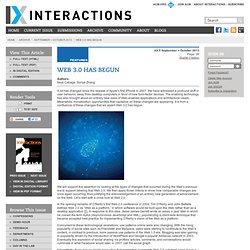
We have witnessed a profound shift in user behavior, away from desktop computers in favor of new form-factor devices. The Power of Networks. Aron Cramer, President and CEO, BSR In his recent book Future Perfect, Steven Johnson describes a fundamental shift in information and influence: The 20th century hub-and-spoke model, defined by a centralized concentration of power with connections to subsidiary institutions, has given way to an interconnected web capturing a “dense network of human intelligence.”
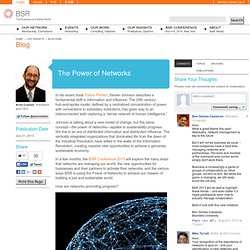
Johnson is talking about a new model of change, but this same concept—the power of networks—applies to sustainability progress. We live in an era of distributed information and distributed influence. The vertically integrated organizations that dominated life from the dawn of the Industrial Revolution have wilted in the wake of the Information Revolution, creating massive new opportunities to achieve a genuinely sustainable economy.
How are networks promoting progress? Networks allow us to see the big picture. Networks produce innovation. Data Mining Reveals How Social Coding Succeeds (And Fails) The process of developing software has undergone huge transformation in the last decade or so.

One of the key changes has been the evolution of social coding websites, such as GitHub and BitBucket. These allow anyone to start a collaborative software project that other developers can contribute to on a voluntary basis. The Orb Project. ORB: Observe – React – Break We are theORBproject, and believe that NO one person can help everyone, but every one person can help someone… That’s why we are creating the world’s very first citizen powered set of information tools – giving you the power to capture and publish the facts as you see them, whereby allowing the facts to be witnessed so that all can intelligently and quickly react to them, something mainstream media doesn’t want and has completely lost site of…!

The truth is, the world is rapidly waking up to the fact that things aren’t as they should be. Walmart’s social network revolution. By Suraya Bliss, Senior Director Digital Strategy, Corporate Communications, Walmart Every week, in every state in America, 1.4 million associates head to work at Walmart.
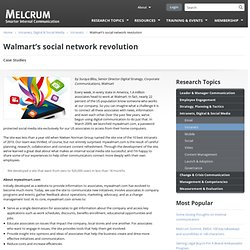
In fact, nearly 22 percent of the US population know someone who works at our company. From influentials to small connected groups. Much marketing activity in the last ten years has been focused on finding and seeding messages with “influentials” – people who have a high number of connections, and are thought capable of setting off cascades of a message.
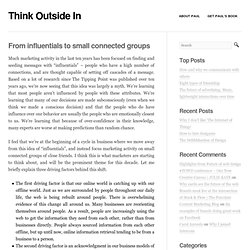
Based on a lot of research since The Tipping Point was published over ten years ago, we’re now seeing that this idea was largely a myth. David Bolinsky: Visualizing the wonder of a living cell. Graph Analytics. Scientists at the Pacific Northwest National Laboratory (PNNL) have been actively involved in graph analytics R&D in social network, cyber communication, electric power grid, critical infrastructure, bio-informatics, and earth sciences applications.
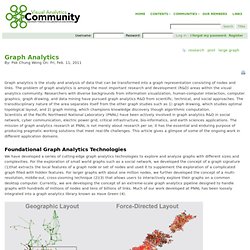
The mission of graph analytics research at PNNL is not merely about research per se; it has the essential and enduring purpose of producing pragmatic working solutions that meet real-life challenges. This article gives a glimpse of some of the ongoing work in different application domains. Foundational Graph Analytics Technologies We have developed a series of cutting-edge graph analytics technologies to explore and analyze graphs with different sizes and complexities. Path Dependence and Path Creation in Energy Systems - A Multi-Level Perspective on Technological, Business and Policy Innovations (EnPath) Background and Objectives Energy systems are largely characterised by path dependence.
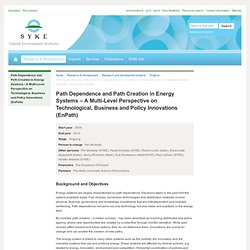
Decisions taken in the past limit the options available today. Fuel choices, conversion technologies and distribution networks involve physical, financial, governance and knowledge investments that are interdependent and mutually reinforcing. Path dependence concerns not only technology but also ideas and practices in the energy field. Dealing with association analysis, unstructured data in ER processes. Trends in entity resolution research and applications In this chapter excerpt from the book Entity Resolution and Information Quality by John R.
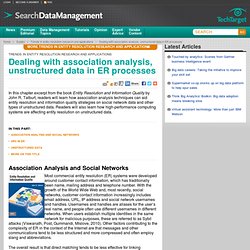
Talburt, readers will learn how association analysis techniques can aid entity resolution and information quality strategies on social network data and other types of unstructured data. Readers will also learn how high-performance computing systems are affecting entity resolution on unstructured data. Association Analysis and Social Networks. Building the social enterprise.
Why do so few companies capture the full value of social technologies?

There’s no doubt organizations have begun to realize significant value from largely external uses of social. Yet internal applications have barely begun to tap their full potential, even though about two-thirds of social’s estimated economic value stems from improved collaboration and communication within enterprises. Although more than 80 percent of executives say their companies deploy social technologies, few have figured out how to use them in ways that could have a large-scale, replicable, and measurable impact at an enterprise level. Just over a quarter of executives say that their companies have significantly incorporated social technologies into the day-to-day work flow by, for example, adapting internal structures, systems, processes, and practices to the greater connectedness they enable. Companies are missing a potentially huge prize. The Fetzer Institute. Digital disruption - Short fuse, big bang. GUESS: The Graph Exploration System, In Action.
Maps provide "most detailed look ever" at how the brain organizes visual information - Images. How does our brain organize the visual information that our eyes capture? Researchers at the University of California, Berkeley, used computational models of brain imaging data to answer this question and arrived at what they call “continuous semantic space” – a notion which serves as the basis for the first interactive maps showing how the brain categorizes what we see. The data on which the maps are based was collected while the subjects watched movie clips. Brain activity was recorded via functional Magnetic Resonance Imaging (fMRI), a type of MRI that measures brain activity by detecting related changes in blood flow. In order to find the correlations in the data collected, the researchers used a type of analysis known as regularized linear regression.
Social Network Theory. Baym, N.K. 1995. The emergence of community in computer-mediated communication. In Cybersociety: Computer-Mediated Communication and Community, ed. S.G. Daily Infographic: How Facebook Photos Go Viral. Robust Yet Fragile Complexity, or Scale Free Network? Nets, Webs and the Information Infrastructure. Table of Contents. Think BIG, Act SMALL: Big Data use case series – Part 2 of 5 (Using Big Data in Retail, Manufacturing and Automotive) « Big Data Analytics. Earlier this year, I came across one of the books on Big Data authored by IBM team. Relentless social media use a 'turn off’ for businesses. Combinatorics. Network theory. Albert-László Barabási.